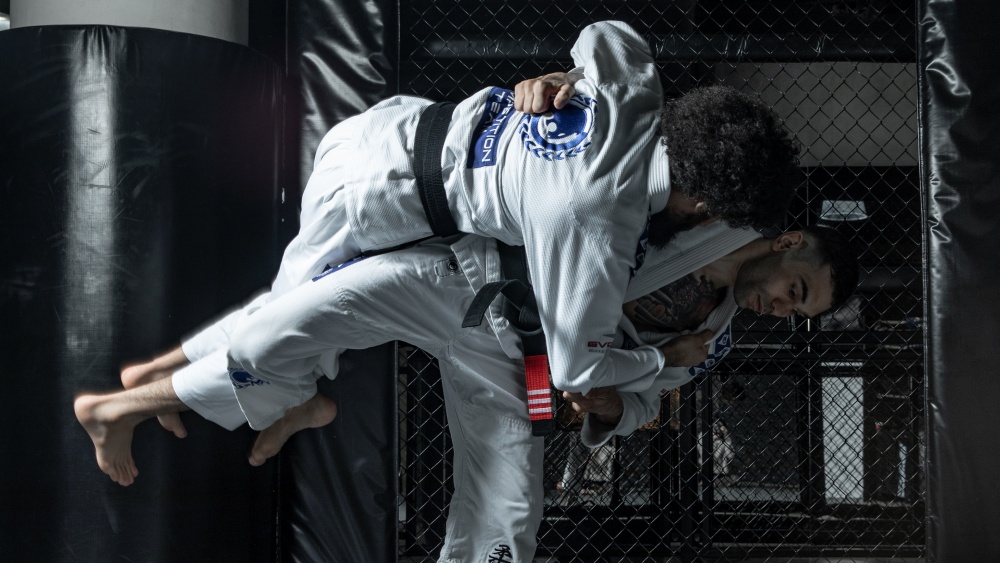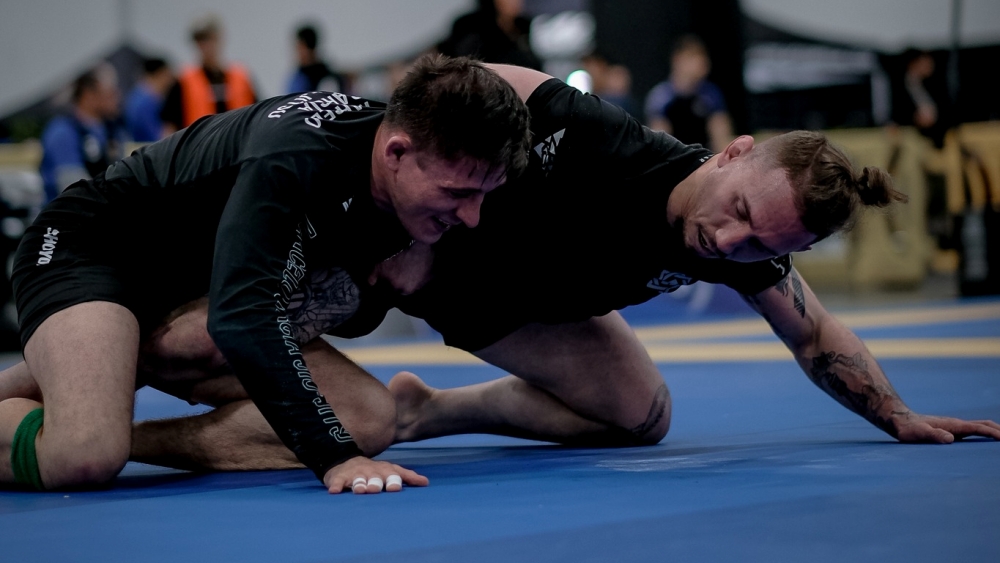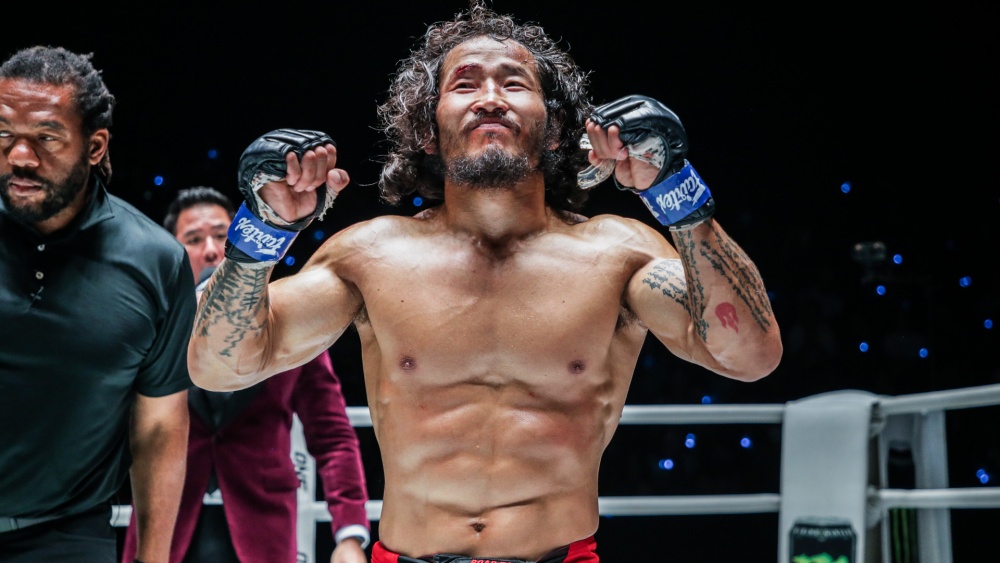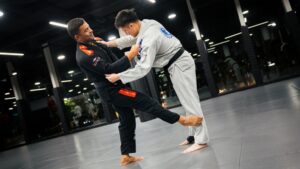One of the most spectacular ways to take the fight to the ground is to throw the opponent with perfect technique. “The art of hitting someone with the planet” is a famous identity of Judo as a sport. Combine it with BJJ, and you have a recipe for a very dangerous grappler who can dominate the opponent on their feet as well as on the ground.
In BJJ, there are different ways to get the fight to the ground, and throws are one of them. This article will teach you everything you need to know about throws, including those that work well for BJJ.
What Is A Throw?
Throws, also known as Nage-Waza (throwing techniques) in Judo, are techniques where you unbalance the opponent by lifting and throwing them to the ground. Judo has the heaviest emphasis on throws of all grappling martial arts and therefore has the most developed throwing techniques. This results in other martial arts like BJJ adapting many of Judo’s methods to level up their stand-up game. Throwing can be divided into different attacking categories, namely the leg, hip, shoulder, hand techniques, and sacrifice throws.
Leg Throws
Leg throws are techniques where you use your leg to reap the opponent’s leg off the ground by putting your weight on their leg while controlling their upper body, which causes them to fall over. Such techniques involve hooking or lifting movements with your legs to trip the opponent.
Shoulder Throws
Shoulder throws are throwing techniques where you throw the opponent over your shoulder by lifting them from the ground. In Japanese, it is known as Seoi Nage (back throw), and throws that unbalance the opponent by pulling them over your shoulder are called Seoi-Otoshi (backdrop).
Hip Throws
Hip throws are throwing techniques where you place your hips below the opponent’s center of gravity as you use your hips as a pivot point. Hip throws are known as Koshi Waza in Japanese. The most common hip throw taught to beginners is the O-Goshi, which means total hip throw.
Sacrifice Throws
Sacrifice throws are throwing techniques where you intentionally put yourself under the opponent’s center of gravity or the ground, potentially putting you in a disadvantageous position to execute the throw. Deliberately falling builds momentum and power for the throw. Such throws are called Sutemi Waza and are divided into two variations: the Ma-Sutemi-Waza (rear sacrifice throw) and Yoko-Sutemi-Waza (side sacrifice throw).
6 Throws That Work For BJJ
Every grappler should know how to bring the opponent to the ground. Most of the time, a perfectly executed throw will leave the opponent startled. This gives you a quick window to instantly apply submissions and finish the fight before they can even recover. Below are the six best throws you can learn for BJJ.
1) Ouchi Gari
BJJ practitioners often start the match with a wide and lowered stance. This is used because it is easier to anticipate guard pulls in this way. The ouchi gari can be your option when facing such opponents. In a match, if the opponent stands with a staggered stance and grabs your collar with their rear hand, instantly break their grip. It is a general rule to never allow the opponent to apply their preferred grips.
After breaking the grip, create an angle by going into a two-on-one grip by taking a wide step with your back leg to the side as you use your lead hand to grab behind their hip, with your far hand controlling their backhand. This now puts you in a T-position. Bring their hand to their hip and use your head to push through. Use your front leg and drop as you connect to hook their leg to finish the ouchi gari.
2) Ippon Seoi Nage
Ippon seoi nage is a technique you can perform when facing opponents who are taller than you. It can be a surprise attack when you are about to lose your position and will indeed wow your training partners once executed.
If the opponent manages to grab your collar and sleeve on the opposite side, this means that it will be difficult to press forward and attack their body. Step away and bring their hand up and across your body when this happens. Make sure you have a grip on their sleeve on the side controlling your collar. As you bring their hand across your body, pull the opponent towards you, catch them coming forward, and finish the throw.
Having their arm across the body and trapped makes this setup work. Though understand that when performing this throw, there can be a danger of your back getting taken, so perform the throw as quickly as possible and apply different setups to make it work.
3) O-Goshi
Start by grabbing the opponent’s sleeve or lapel with your rear hand to set up the o-goshi effectively. Improve your position by applying a high grip, gripping higher than the opponent’s hand, typically at their back. As you attempt to use the high grip and the opponent blocks your bicep, go underneath and grab behind their hips instead.
You can now throw your hips across from this position and finish the o-goshi. Remember that attacking the opponent with a staggered stance is the optimal position to throw your hips across and make the opponent lean forward to unbalance them.
4) Koshi Guruma
Koshi guruma is one of the best throws you can perform if the opponent stays upright. Start the throw by grabbing just above the opponent’s left elbow to force their hand to remain at the top. It will help you to flare their arm out to draw them closer. Place your right hand on top of their opposite shoulder.
Step with your right foot across their body and elevate their arm using your left hand. As you turn your body, wrap their head using your right hand by grabbing behind their neck or towards their opposite shoulder as you bend forward to finish the throw. Remember to fully commit to the throw, as the opponent can counter with a body lock from back control.
5) Sumi Gaeshi
According to John Danaher, the two most-suited throws for Jiu-Jitsu, especially when you are a beginner, are the sumi gaeshi and tomoe nage. When performing the sumi gaeshi, lead with your right leg if the opponent leads with their left leg so you can have the outside position as they grab for the inside position. Grab over their shoulder with your right hand to secure the outside position. Use your left hand to hold the opponent’s opposite sleeve.
It is essential to have the outside position so that the opponent can’t post their arm as you go for the throw. Use your right leg to hook their right leg as you fall under and throw them to the side using the elevation. While the sumi gaeshi is a sacrifice throw typically used to defend against the single-leg takedown in BJJ, it is still essential to learn how to defend a takedown by sprawling. A failed sumi gaeshi can put you straight to bottom side control or mount, so keep practicing this technique to get better timing.
6) Tomoe Nage
Another example of a sacrifice throw is the Tomoe Nage. It is performed by gripping the opponent’s collar and sleeve as you fall backward by curling your body while planting your feet on the opponent’s waist to lift and throw them above you, causing them to flip over and land on their back.
Final Thoughts
Even though guard pulling can always be an option in Jiu-Jitsu, pulling guard in a match involving strikes is not advisable. Learn a takedown or throw to put your opponents on the ground effectively. Keep in mind that learning throws requires a lot of drilling. Be patient, and you can later hit your opponents with the planet!
You may also like:

















